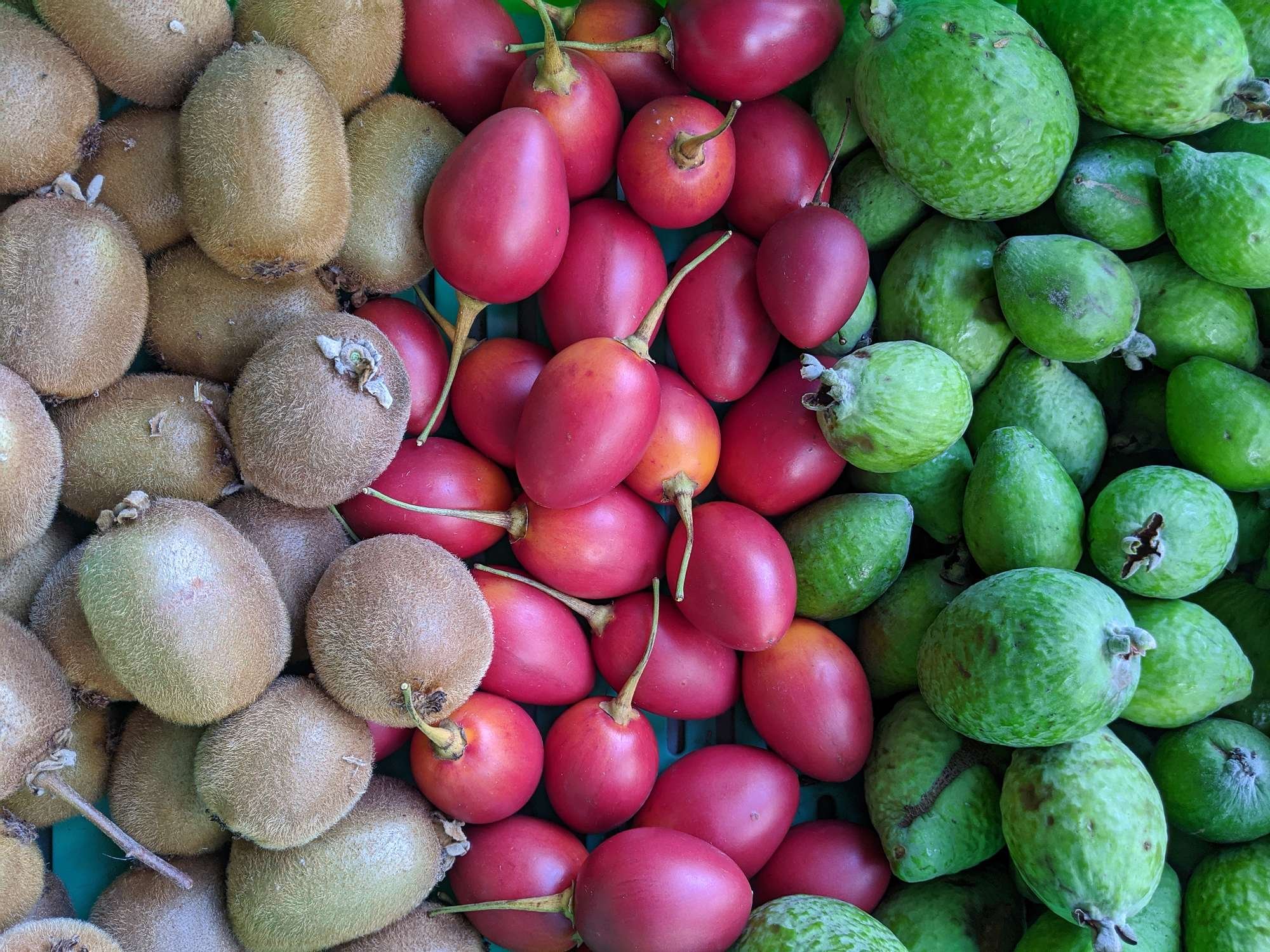George St Orchard – Rory Harding’s Food Forest
Suzanne Middleton, Wild Dunedin — March 28, 2020
Rory Harding’s spectacular George St Orchard in the heart of Dunedin demonstrates how much food you can grow in 300 square metres. Rory makes it look easy, but hard work, science and microclimates are the secret to his success.
In Dunedin we often grumble about poor summers and believe that some fruits and vegetables can only be grown in a greenhouse. The George St Orchard is an example of working with what you have to create a productive garden in spite of a colder climate. Image by: Belle Murphy
When Rory moved into the property in 2008 the backyard was lawn which he progressively converted to vegetables, then introduced berries, vines, and fruit trees. The two high brick walls facing north and west provide shelter and warmth, and the soil is deep clay loam.
The surface of his vegetable beds and younger plantings of perennials are mulched with compost made in a covered bay which can house up to five separate 1.3 cubic metre piles. He doesn’t let weeds go to seed and uses the chop and drop method of incorporating them into the soil.
Trial, error and observation of the particular conditions that suit each kind of plant have been essential elements in the success of this garden. None of it happens by chance.
“I often emphasise that a great way to achieve a full and diverse garden is via a structured beginning” Rory Harding. Image by: Rory Harding
“Gardening is a lens into nature. It’s one way to learn about the natural world. For example, it behoves us to learn the importance of soil carbon, and support farmers who are sequestering it.” Image by: Belle Murphey
The enormous range of fruit, berries and vegetables growing here is astounding. Even more impressive is the quantities produced – 40 to 50 kilos of kiwifruit and a staggering 200 kilos of feijoas every year.
As Rory says “Because the ground is covered with mixed herbaceous plants, often self-seeded, there is an illusion of wildness. However I often emphasise that a great way to achieve a full and diverse garden is via a structured beginning, for example Charles Dowding’s no-dig approach. If you wish, the garden can be allowed to become more wild as you gain experience.”
Think self-seeding, under-planting, managing light levels, growing in layers, pest control by diversity, minimal pruning, sweet cicely, umbelliferous flowers, food forest.
Rory sees it like this “Gardening is a lens into nature. It’s one way to learn about the natural world. For example, it behoves us to learn the importance of soil carbon, and support farmers who are sequestering it. I consider myself a ‘garden farmer’ – the garden connects me to the regenerative agriculture movement more broadly.”
See video and read more on Rory's urban garden with This NZ Life. Visit Rory's website for an excellent photographic record of his urban garden.



